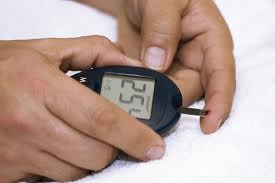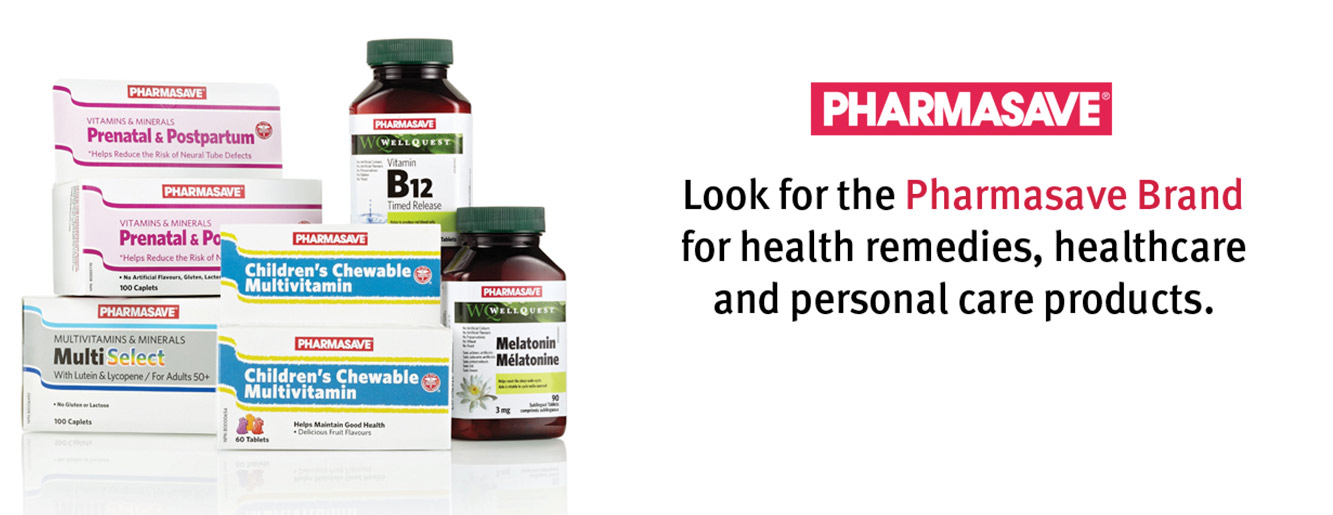
Diabetes
The Facts
Diabetes is a condition where people don’t produce enough insulin to meet their body’s needs and/or their cells don’t respond properly to insulin. Insulin is important because it moves glucose, a simple sugar, into the body’s cells from the blood. It also has a number of other effects on metabolism.
The food that people eat provides the body with glucose, which is used by the cells as a source of energy. If insulin isn’t available or doesn’t work correctly to move glucose from the blood into cells, glucose will stay in the blood. High blood glucose levels are toxic and cells that don’t get glucose are lacking the fuel they need.
There are two main kinds of diabetes: type 1 diabetes and type 2 diabetes. More than 90% of all people with diabetes have type 2. Overall, about 30 million people in North America have diabetes. Only about two-thirds of people with type 2 diabetes are aware of it and are receiving treatment because, for many people, early symptoms are not noticeable without testing.
Type 1 diabetes occurs when the pancreas cannot make insulin. Everyone with type 1 diabetes requires insulin injections.
Type 2 diabetes occurs when the pancreas does not make enough insulin or the body does not use insulin properly. It usually occurs in adults, although in some cases children may be affected. People with type 2 diabetes usually have a family history of this condition and are most often overweight. People with type 2 diabetes may eventually need insulin injections. This condition occurs most commonly in people of First Nations descent, Hispanics, and North Americans of African descent.
Another less common form is gestational diabetes, a temporary condition that occurs during pregnancy. According to the Canadian Diabetes Association (CDA), about 4% of women, and up to 18% of First Nations women, will develop gestational diabetes. The problem usually clears up after delivery, but women who have had gestational diabetes have a higher risk of developing type 2 diabetes later in life.
Causes
Type 1 diabetes is an autoimmune disorder. It’s believed that a combination of genetic predisposition and additional (as yet unidentified) factors provoke the immune system into attacking and killing the insulin-producing cells in the pancreas.
Type 2 diabetes is mainly caused by insulin resistance. This means no matter how much or how little insulin is made, the body can’t use it as well as it should. As a result, glucose can’t be moved from the blood into cells. Over time, the excess sugar in the blood gradually poisons the pancreas causing it to make less insulin and making it even more difficult to keep blood glucose under control.
Obesity is a leading cause of insulin resistance – 90% of people with type 2 diabetes are overweight. Genetic factors are also likely to be involved in the cause of type 2 diabetes. A family history of the disease has been shown to increase the chances of getting it.
Other risk factors for the development of type 2 diabetes include:
- a history of gestational diabetes
- being 40 years of age or older
- blood vessel disease
- First Nation, Hispanic, South Asian, Asian, or African descent
- giving birth to a large baby
- high blood pressure
- high cholesterol
- polycystic ovary syndrome
- schizophrenia
- prediabetes or impaired fasting glucose
Symptoms and Complications
People with type 1 diabetes who are not being treated urinate frequently and feel excessively thirsty. They usually feel very tired and experience severe weight loss despite normal or excessive food intake.
The symptoms of type 2 diabetes usually appear more gradually. People with type 2 diabetes who do not have their blood glucose under control often have a persistent, mild thirst. They urinate frequently, and often feel mild fatigue and complain of blurred vision. Many women with the disease have recurring vaginal yeast infections.
Diabetes is a major cause of heart disease, the leading cause of death in Canada. It’s also the biggest cause of blindness and kidney failure in adults. Older adults with diabetes are twice as likely to develop high blood pressure as people without diabetes.
People with diabetes are also 25 times more likely to undergo foot and other “lower extremity” amputations due to circulatory problems. Between one-third and one-half of men who have diabetes will experience erectile dysfunction at some point.
Making the Diagnosis
Diabetes is diagnosed with simple blood tests. Your doctor may diagnose diabetes if the level of glucose in your blood after 8 hours of fasting is 7.0 mmol/L or higher. If your fasting blood glucose is between 6.1 mmol/L and 6.9 mmol/L, then you may have a condition known as impaired fasting glucose or prediabetes, which may later develop into diabetes.
Diabetes is also diagnosed if a blood glucose level taken anytime of the day without regard to meals is 11.1 mmol/L or higher, plus you have symptoms characteristic of diabetes (e.g., increased thirst, increased urination, unexplained weight loss). It is important to note that one high blood glucose reading does not mean you have diabetes. In most cases, at least 2 high blood glucose readings are required before your doctor will make a diagnosis, unless type 1 diabetes is suspected or the person is very sick.
Doctors may also diagnose diabetes based on the results of an oral glucose tolerance test (OGTT). With this test, a person fasts and then is given a drink containing 75 g of carbohydrate. The blood sugar is checked at fasting and 2 hours after drinking the solution. A blood sugar greater than 11.1 mmol/L after 2 hours confirms the diagnosis of diabetes.
Treatment and Prevention
Currently, type 1 diabetes is not preventable. However, studies have shown that type 2 diabetes can be prevented by adopting lifestyle changes that include eating a healthy diet and exercising.
In addition, some studies have shown that certain oral antidiabetic medications may play a role in preventing the development of type 2 diabetes for people who are at high risk of developing it. Lifestyle changes and medications may prevent approximately 30% to 60% of type 2 diabetes.
Diabetes is a chronic condition, and it can last an entire life. The goal of treating diabetes is to keep blood glucose levels as close to a normal range as possible. This prevents the symptoms of diabetes and the long-term complications of the condition. If you’ve been diagnosed with diabetes, your doctor – working with the members of your diabetes care team – will help you find your target blood glucose levels.
More than most conditions, treating diabetes requires a significant amount of real effort on the person’s part. Coping with diabetes is a lifelong challenge, so people with diabetes should not be afraid to speak with a doctor or pharmacist if they feel overwhelmed.
Part of a treatment plan for diabetes will involve learning about diabetes, how to manage it, and how to prevent complications. Your doctor, diabetes educator, or other health care professional will help you learn what you need to know so you are able to manage your diabetes as effectively as possible. Keep in mind that learning about diabetes and its treatment will take time. Involving family members or other people who are significant in your life can also help you manage your diabetes.
Although up to 30% of people with diabetes use herbal products to help control blood sugar, there are not enough good quality studies to show that these treatments are safe and effective.
People with type 1 diabetes need insulin* continuously to survive.
There are three important things a person can do to treat type 2 diabetes:
- make lifestyle changes such as diet and exercise
- use medication
- monitor blood glucose levels
Like many conditions, treatment of type 2 diabetes begins with lifestyle changes, particularly in regards to diet and exercise. If you have type 2 diabetes, speak to your doctor and diabetes educator about an appropriate diet. You may be referred to a dietitian. It is also a good idea to speak with your doctor before beginning an exercise program to determine what kind and how much exercise is appropriate.
If lifestyle changes don’t put blood glucose levels in the target range, medications may be required. Medications for type 2 diabetes include antidiabetic pills, insulin injections, or a combination of both.
Medications are very effective at treating diabetes and reducing the symptoms and long-term effects of the condition. However, hypoglycemia (a blood glucose level that is too low) can occur when taking certain medications for diabetes.
Symptoms of hypoglycemia include:
- anxiety
- confusion
- difficulty concentrating
- dizziness
- drowsiness
- fatigue
- headache
- hunger
- irritability
- pale skin
- sweating
- tremors or shakiness
- visual changes
If your blood glucose level is extremely low, it is possible to have a seizure or lose consciousness. A health care professional can teach you how to recognize the warning signs of hypoglycemia. People with diabetes should carry candy, sugar, or glucose tablets to treat hypoglycemia.
Hypoglycemia is a side effect of many medications for type 1 and 2 diabetes, but it is never a reason to avoid treatment. The best way to avoid hypoglycemia is to monitor blood glucose.
Frequent measurement of blood glucose levels is the best way to know whether blood glucose levels are in the target range. This is easily done at home with a blood glucose monitor.
In recent guidelines, the CDA says it’s essential for all people with diabetes to self-monitor blood glucose levels. The number of times you should test your blood glucose will be based on the type of diabetes you have and your diabetes treatment.
It is important to record blood glucose readings taken at different times of the day – after fasting as well as 2 hours after a meal. This allows your doctor to see a snapshot of how your blood glucose levels vary during the day and recommend treatments accordingly. Most blood glucose meters now have “memory” that stores a number of blood glucose tests along with the time and date they were taken. Some even allow for graphs and charts of the results to be created when the monitor is connected to a computer.
A blood test done in the laboratory called the glycosylated hemoglobin test (or A1c test) allows your doctor to see the average of blood glucose values over the last 3 months. This is a good indication of how well your blood glucose has been in control overall and allows your doctor to manage your diabetes more effectively.
*All medications have both common (generic) and brand names. The brand name is what a specific manufacturer calls the product (e.g., Tylenol®). The common name is the medical name for the medication (e.g., acetaminophen). A medication may have many brand names, but only one common name. This article lists medications by their common names. For information on a given medication, check our Drug Information database. For more information on brand names, speak with your doctor or pharmacist.
All material © 1996-2012 MediResource Inc. Terms and conditions of use. The contents herein are for informational purposes only. Always seek the advice of your physician or other qualified health provider with any questions you may have regarding a medical condition.

